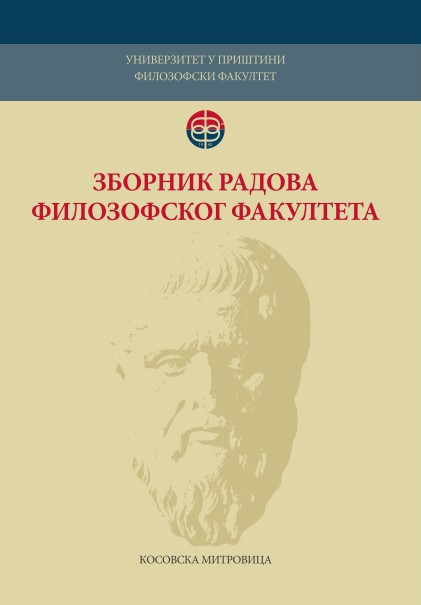Здравствена уверења према ковиду 19 - инструмент за процену и израженост уверења
Health Beliefs about COVID-19: Instrument for Assessment and Expression of Beliefs
Author(s): Tijana Živković Lj, Dragana Stanojević Z, Olivera RadovićSubject(s): Social Sciences, Psychology
Published by: Филозофски факултет, Универзитет у Приштини
Keywords: health beliefs; COVID-19; scale
Summary/Abstract: The main goal of this research was to construct a scale to assess health beliefs about COVID-19, in the light of the Health Beliefs Model (Rosenstock, 1966). The study included 420 subjects, mean age M = 31.65 years (SD = 12.72). Two-thirds (76%) of the respondents were female. The respondents filled in a set of questionnaires via the Internet. At the very beginning, the purpose and goal of the research were explained and the consent for participation in the research was obtained. The survey was anonymous, while the data were collected from April to September, 2020. The COVID-19 Health Belief Scale showed satisfactory psychometric characteristics. Factor analysis has shown that four main components can be distinguished, which correspond to the types of beliefs included in the Health Beliefs Model (Rosenstock, 1966). Thus, four subscales were ob-tained: Perceived susceptibility to COVID-19 (four items), Perceived severity of COVID-19 (four items), Perceived benefit of preventive behaviour (four items), and Observed barriers to preventive behaviour (three items). This scale structure corresponds to other similar scales (HBMS, Champion, 1984; AHBS, Zagumny & Brady, 1998), based on the Health Beliefs Model (Rosenstock, 1966). The obtained average values of scores on the observed susceptibility to COVID-19 show that our respondents do not consider themselves either extremely susceptible or protected from contracting this disease. On the other hand, it is obvious that our respondents do not consider COVID-19 to be a serious enough disease, despite daily warnings that the disease is unpredictable and its consequences are serious, long - term, and even more frequent than of other viral diseases. The observed barriers to preventive behaviour are relatively low, as are the scores on the subscale. The observed benefits of preventive behaviour range from the highest possible scores. When we summarize these results, we can conclude that our respondents apply preventive measures, because they are convinced that they are useful in preventing infection, and that obstacles to their implementation have not been observed to a significant extent. However, it remains unclear why this disease is not considered serious enough. One possibility is that the information placed in the media was initially ambiguous, ranging from describing COVID-19 as a common respiratory infection to a serious illness with severe consequences. We can look for another explanation within our sample. Namely, the age of our average respondent was 31, and as many as two thirds of the respondents were women. Initial information about COVID-19, placed through the media, was that this disease seriously affects older people and, for the most part, males. Women perceived significantly more benefits from preventive behaviour, and men significantly more barriers. Respondents' burden of a chronic disease proved to be significant for two subscales: Perceived susceptibility to COVID-19 and Observed barriers to the implementation of preventive behaviour. People suffering from a chronic disease believe that they are more susceptible to the COVID-19 infection, i.e. that they are more susceptible to this disease compared to those who do not have chronic diseases. However, people burdened with a chronic disease notice several obstacles to the implementation of preventive measures at the same time. When it comes to the higher observed susceptibility to COVID-19 in married people compared to those who are not, we can assume several factors that lead to this: reduced possibility of isolation, double possibility of infection, greater social interaction due to different needs, and the like. This research has its limitations. Most importantly, we could not thoroughly examine the validity of the instrument, due to the lack of similar scales. Another important limitation is that the sample was mostly made up of women. The third important limitation concerns the average age of the respondents; this study covered only a small number of the elderly, who are most at risk during this pandemic. Nevertheless, we believe that the timeliness and novelty of the constructed scale are sufficient to indicate the need to use it, at least as a first step in the development of some future scales with a similar purpose. Recommendations for future research are such that they should respond to the stated limitations of this research; to be directed towards a thorough validation, towards different types of samples, but also towards studying both the predictors of these health beliefs and the value of these beliefs for predicting some forms of health behaviour, quality of life, adherence to medical instructions, etc.
Journal: Зборник радова Филозофског факултета у Приштини
- Issue Year: 51/2021
- Issue No: 1
- Page Range: 45-62
- Page Count: 18
- Language: Serbian

